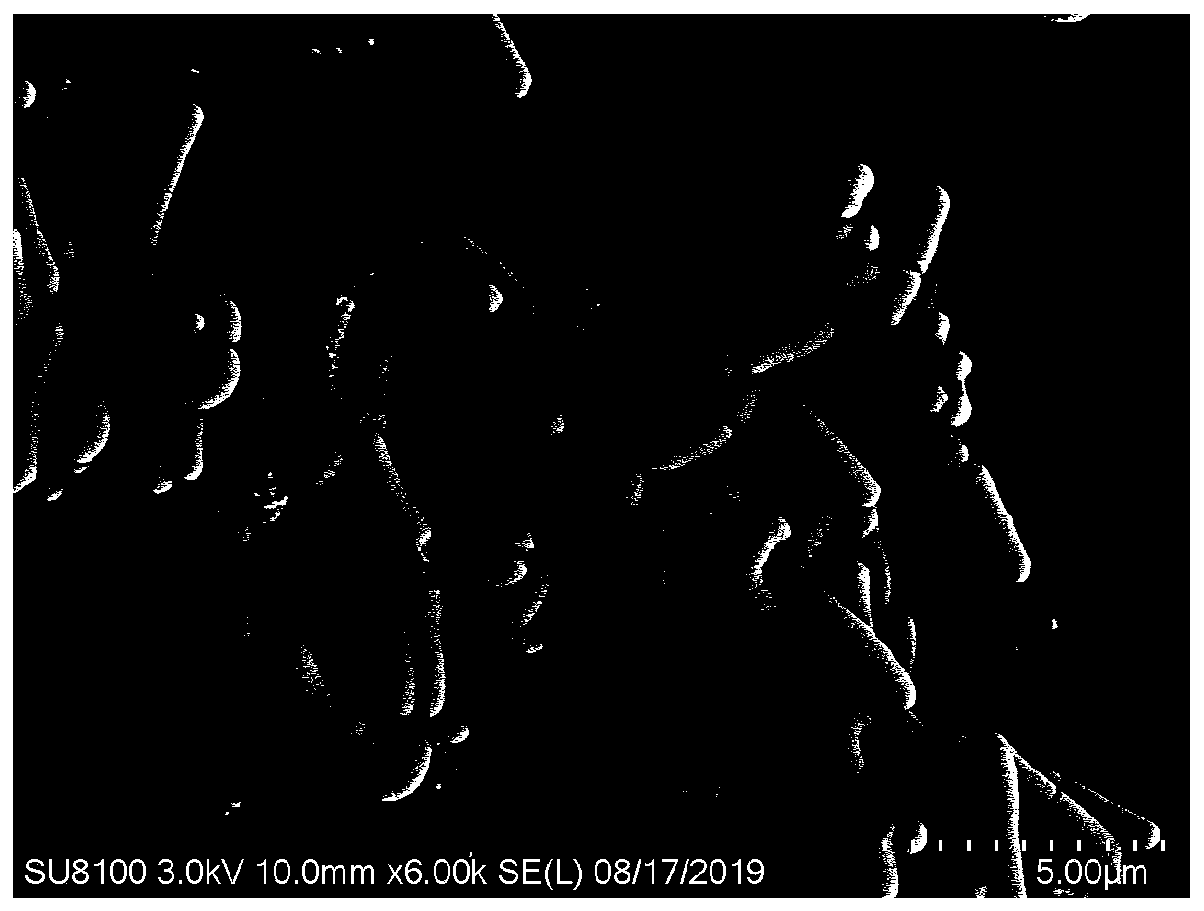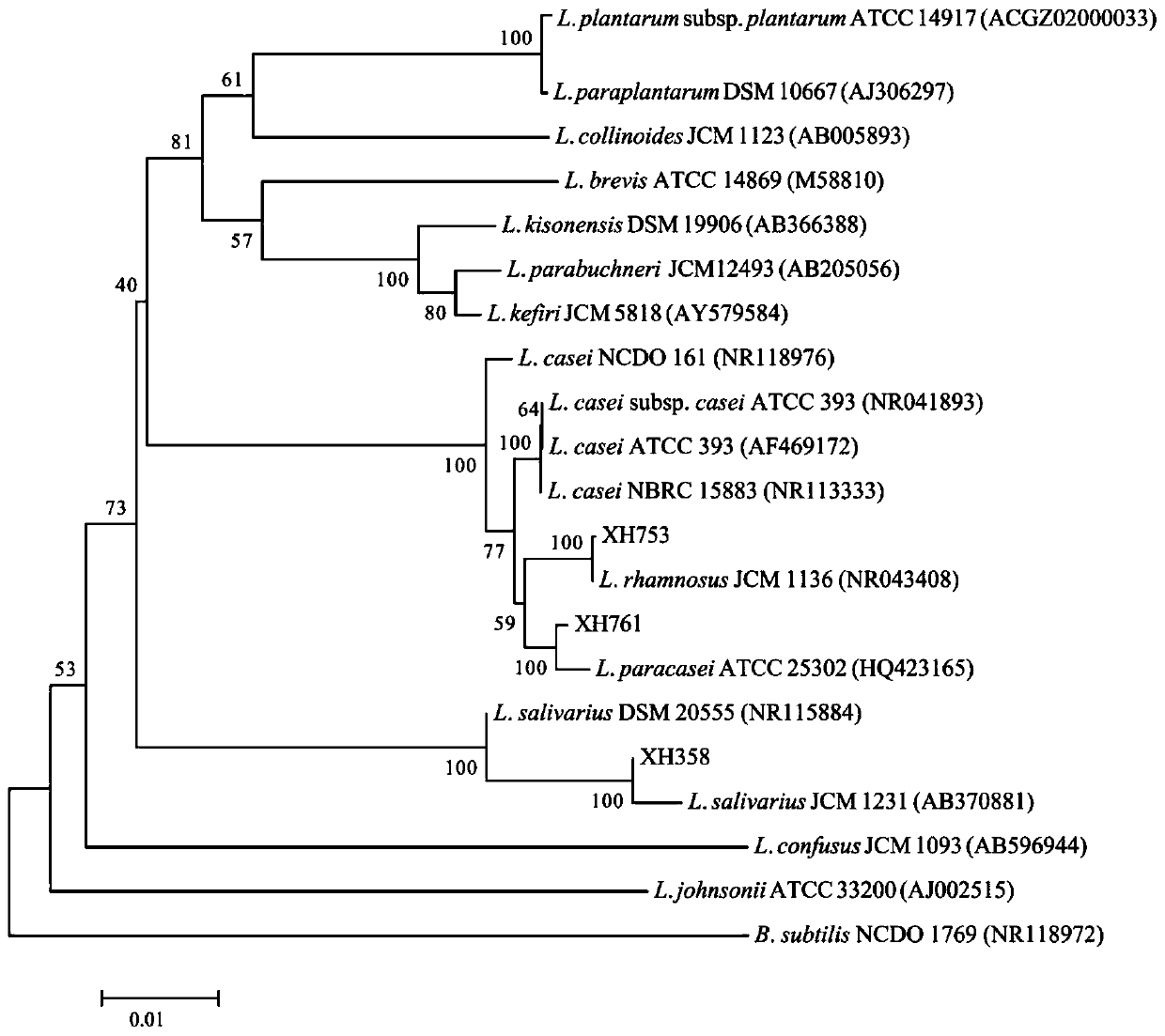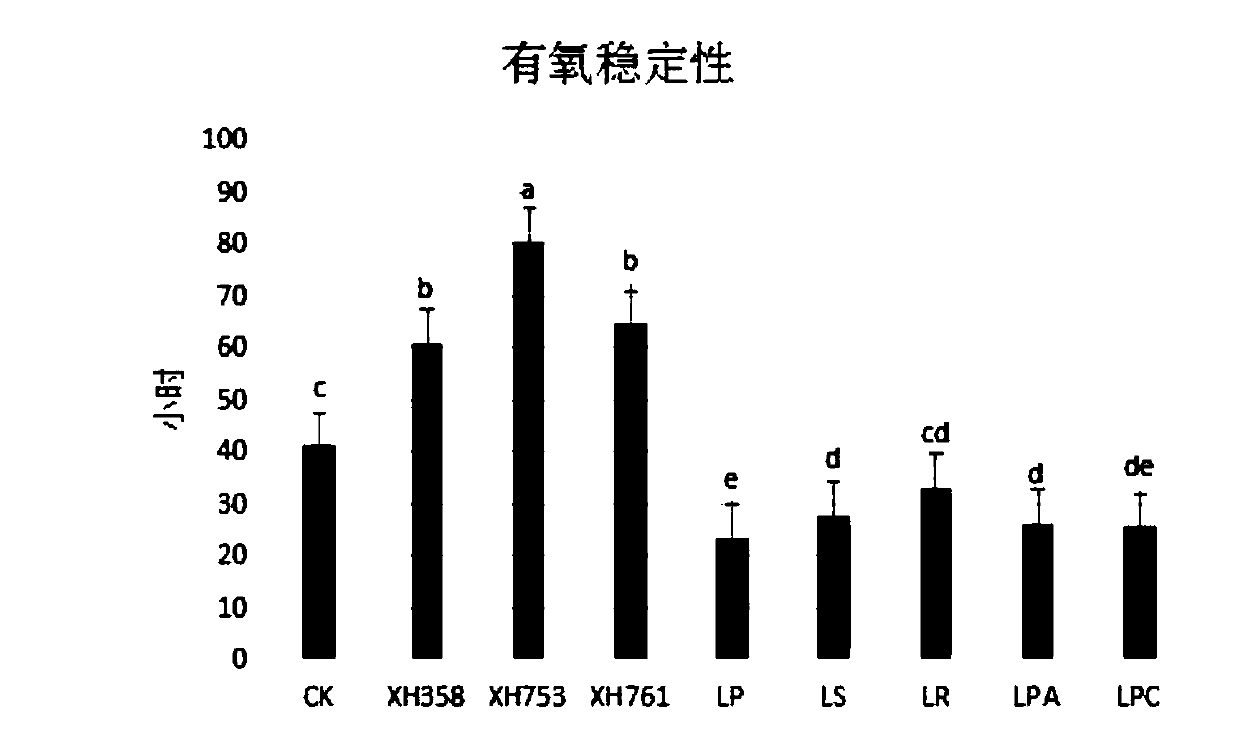Lactobacillus rhamnosus 753 and application thereof, silage additive and silage
A technology of Lactobacillus rhamnosus and silage, applied in the agricultural field, can solve the problems of pungent smell, lower pH value, moldy silage, etc., and achieve good aerobic stability
- Summary
- Abstract
- Description
- Claims
- Application Information
AI Technical Summary
Problems solved by technology
Method used
Image
Examples
Embodiment 1
[0034] 1. Isolation and screening of strains
[0035] 1. Raw materials:
[0036] Corn: Whole-plant corn at the milky stage (from three varieties: Yayu 8, Zhongdan 808 and Duoyu 3);
[0037] Hybrid Pennisetum: Hybrid Pennisetum harvested when the height is greater than 1.5m (Guimu No. 1)
[0038] MRS liquid culture medium: Dissolve the raw materials (Table 1) in 1L of distilled water, autoclave at 121°C for 15 minutes, and cool down for later use.
[0039] MRS solid medium: Dissolve the raw materials (Table 1) in 1L of distilled water, add 15g of agar, pour it into a disposable petri dish, autoclave at 121°C for 15min, and cool it for later use.
[0040] Table 1 Medium Raw Materials
[0041] Raw Material Dosage Beefextract 10.00g Yeast Extract Yeastextract 5.00g Sodium acetate anhydrous 5.00g Peptone 10.00g K 2 HPO 4
2.00g Glucose 20.00g Tween-80Tween-80 1.00ml MgSO 4 .H 2 o
0.58g Ammonium citrate 2....
Embodiment 2
[0063] 2. Identification of strains
[0064] DNA extraction
[0065] Lactobacillus rhamnosus 753 was cultured overnight in 5 mL of MRS medium at 37 °C, centrifuged at 10,000 g for 5 min, and centrifuged in a clean 15 mL microcentrifuge with TE buffer (10 mmol L-1 tri-hcl, 0.1 mmol L-1 EDTA, pH 8.0). The cells were washed twice in the tube and centrifuged again. DNA extraction was performed using TIANamp Bacterial DNA Kit (DP302-02, Tiangen Biotech Co., Ltd., Beijing, China) according to the manufacturer's instructions. The DNA concentration of the strain was measured at 260 nm using a UV-Vis spectrophotometer (Shanghai Sunshine Hengping Scientific Instrument Co., Ltd., Shanghai). DNA extracted from the strains was stored at -20°C until use.
[0066] 16SrRNA Species Identification
[0067] The 16SrDNA coding region was amplified by PCR. Use 1 μL of diluted DNA as template for PCR reactions. PCR primers were 27f (5'-AGAGTTTGA TCC TGG CTCAG-3') and 1492r (5'-tacggctac CTTGT...
Embodiment 3
[0073] 3. Lactobacillus rhamnosus 753 (Lactobacillus rhamnosus) (silage corn, silage additive, silage preparation
[0074] Silage raw material: Whole plant corn harvested in the milk ripening stage at Sichuan Agricultural University Experimental Farm (Chongzhou, Sichuan, China)
[0075] experiment material;
[0076] The test materials included 3 screened lactic acid bacteria strains, 4 lactic acid bacteria standard strains, 1 commercial Lactobacillus plantarum (LPC) and 1 commercial Lactobacillus rhamnosus (LRC), and 2 commercial strains were purchased from Sichuan Gaofuji Biotechnology Co., Ltd. company.
[0077] (1) Three strains of lactic acid bacteria screened out
[0078] b. Lactobacillus salivarius 358 (XH358);
[0079] c. Lactobacillus rhamnosus 753 (XH753);
[0080] d. Lactobacillus paracasei 761 (XH761).
[0081] (2) 4 standard strains of lactic acid bacteria
[0082] a'. Lactobacillus plantarum (LP);
[0083] b'. Lactobacillus salivarius (LS);
[0084] c'. La...
PUM
 Login to View More
Login to View More Abstract
Description
Claims
Application Information
 Login to View More
Login to View More - R&D
- Intellectual Property
- Life Sciences
- Materials
- Tech Scout
- Unparalleled Data Quality
- Higher Quality Content
- 60% Fewer Hallucinations
Browse by: Latest US Patents, China's latest patents, Technical Efficacy Thesaurus, Application Domain, Technology Topic, Popular Technical Reports.
© 2025 PatSnap. All rights reserved.Legal|Privacy policy|Modern Slavery Act Transparency Statement|Sitemap|About US| Contact US: help@patsnap.com



